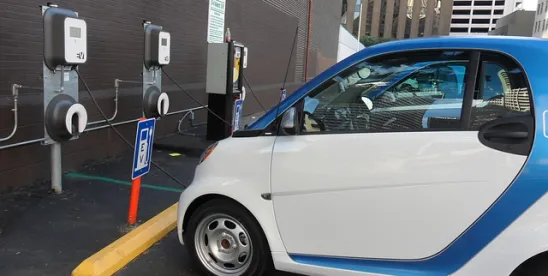The Financial Times convened a worldwide panel of vehicle electrification experts in London last month, and the breadth and depth of developments from the EU, China and the US was staggering. The inexorable march toward electrification is proceeding, which cannot be debated. How that happens, when it happens and which market leaders will emerge is a far less clear proposition. Here are some highlights from the Summit:
The program began with a “Keynote Conversation” between Freeman Shen, Founder and CEO of WM Motor, and Peter Campbell, Motor Industry Correspondent for the Financial Times who chaired the Summit. Mr. Campbell began by noting that “we are not at a fork in the road – but rather a labyrinth.” Mr. Shen provided an overview of the crowded Chinese EV market, with somewhere between 400-500 entrants. Of that number, about 100 are focused on making cars and Shen predicts a large shakeout, especially at the luxury end of the market where there may not be enough volume. (WM is focused on getting mass market EVs on the road.) While the rest of the Chinese auto industry is expected to decline about 5% this year he noted, EV’s will rise (but not as sharply as predicted). Using more common world definitions of EV’s (China uses term “new energy vehicles”), Shen predicted a total Chinese EV market for 2019 of about 2.5–3 million units, with 1–1.5 million of those being BEV’s.
Next “The Big Picture” opening keynote panel was featured, including Mike Hawes, CEO, SMMT; Olaf Sakkers, Partner, Maniv Mobility; Maximilian Szwaj, VP and Chief Technical Officer, Aston Martin; Paul Simpson, CEO, CDP; Thomas Ulbrich, Member of the Board of Management, Volkswagen; and Roberto Vavassori, President, CLEPA. Mr. Ulbrich noted that EV adoption is a matter of “when” and not “if,” and requires business models to change. He noted that electrification is a large technical issue in part, but the bigger challenge is a change in thinking in customers’ mindsets and how customers are approached. Mr. Simpson placed a 20-year clock on the internal combustion engine, predicting that “net zero” emissions will be achieved by 2039. Mr. Szwaj noted the biggest change in the market will be “buying trips” vs. “buying cars,” and how OEMs adjust to that change. Several of the panelists noted a need for more flexibility and speed in government regulation of EV’s.
Later in the morning, the prestigious global law firm Linklaters LLP reviewed important legal developments affecting EV’s, including Legal Perspectives in a two-part deep dive into (1) “Is ‘Shadow Mode’ the Next Step Towards Driverless Cars?” presented by Dr. Daniel Pauly, Partner, and Maximilian Zahn, Associate, in Linklaters‘ Frankfurt office; and (2) “Cars of the Future and Connectivity Standards: A Poisoned Relationship?” presented by Dr. Pauline Debré, Partner and Sabine Thibault-Liger, Counsel, in Linklaters’ Paris office. Dr. Pauly and Mr. Zahn noted the promise of “shadow mode” to accelerate the development of technologies by using sensors to compare what the driver is doing vs. optimal operation of the vehicle. Balanced with that promise is the application of the General Data Protection Regulation (GDPR) and other standards, which require transparency, legality and privacy by design including customer consents to legitimate uses of data. They further noted the challenges of achieving “state of the art” privacy while operating in a relative “regulatory vacuum” in certain respects, while facing the risks of product liability claims, fines and even criminal prosecution for falling short of “state of the art.”
Dr. Debré and Ms. Thibault-Liger reviewed in great depth the key product role that connectivity will play, and related legal challenges, given that 40% of consumers will change their vehicle buying decision based on connectivity attributes. They noted that the automotive industry has not seen anywhere near the kind of litigation seen in the telecom industry, but that may change in the future and noted that Mercedes and three European automotive suppliers filed an action in early 2019 against Nokia with the EU, to seek clarification of certain connectivity issues. They further noted the importance and difficulty of achieving FRAND (Fair, Reasonable and Non-Discriminatory) licensing rates for SEP’s (Standard Essential Patents) used in vehicle connectivity. The challenges exist, in part, because there are no legislative or regulatory standards for determining FRAND, and the market continues to develop as guided by limited legal precedent. Ms. Thibault-Liger noted some of the anti-competitive concerns and related regulatory issues that need to be managed in the implementation and integration of connectivity technology.
Other highlights of the conference included:
- Phil Popham, CEO of Lotus Cars, discussed the Type 130 all-electric “hyper car” that Lotus has designed and developed in the UK, and noted that Lotus feels like a “70-year-old startup” now under Geely’s ownership, which should provide an ongoing source of capital for research and development.
- An electric powertrain won the Pike’s Peak race over an ICE for the first time in history recently.
- Mr. Andreas Tschiesner and Mr. Yoshi Takanuki, both Senior Partners at McKinsey, noted that creating the right mobility model is a $1.6 trillion industry question, with the payoff being huge in terms of safety (approximately 1.3 million people were killed last year worldwide in mobility accidents). Noting that we are working through the first inflection point in autonomy currently, they predict a second inflection point around 2050.
- Predictions ranged from Euphoria (“EV’s will ‘take off” by 2022”) to Realism (“We do not have any definitive clue what will happen [in electrification] in the next 10 years.”)
- Simon Meng, Partner in Linklaters Shanghai Office, joined the author of this blog in a review of regulatory developments in electrification and autonomy in China and the U.S. Mr. Meng reviewed China’s ambitious plans to achieve more than 5 million of pure electric vehicle production and sales volume by the year 2020 with nearly 5 million public, private and government-owned charging stations installed by the same time. By 2025, “new energy vehicles” are expected to account for nearly 25% of all sales. He also noted the government’s key role in promoting the industry through reasonable regulation and subsidies (including local subsidies), although the rate of subsidization is now declining.
It was interesting to step out of our U.S. bubble to see what the Rest of World is doing in electrification. This area undoubtedly will continue to evolve and bring surprises and excitement to the market.




 />i
/>i
